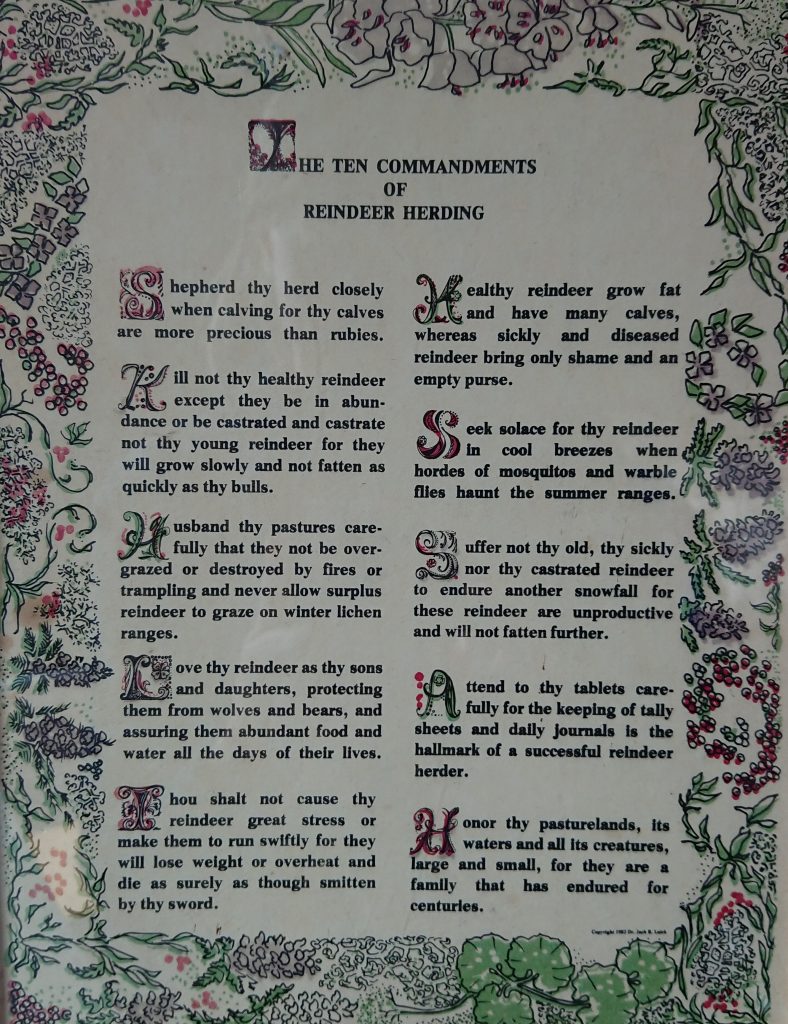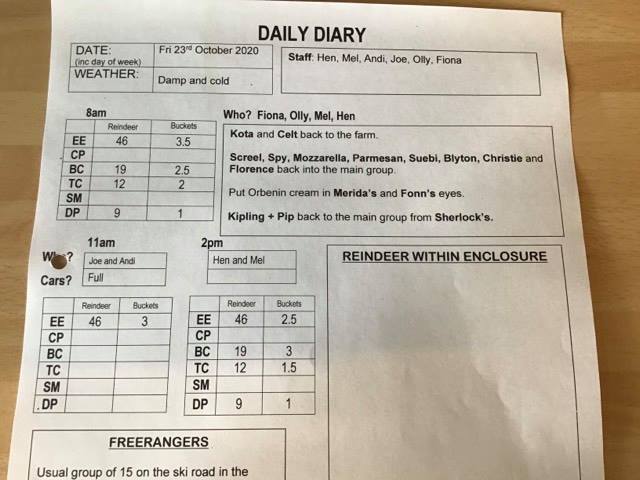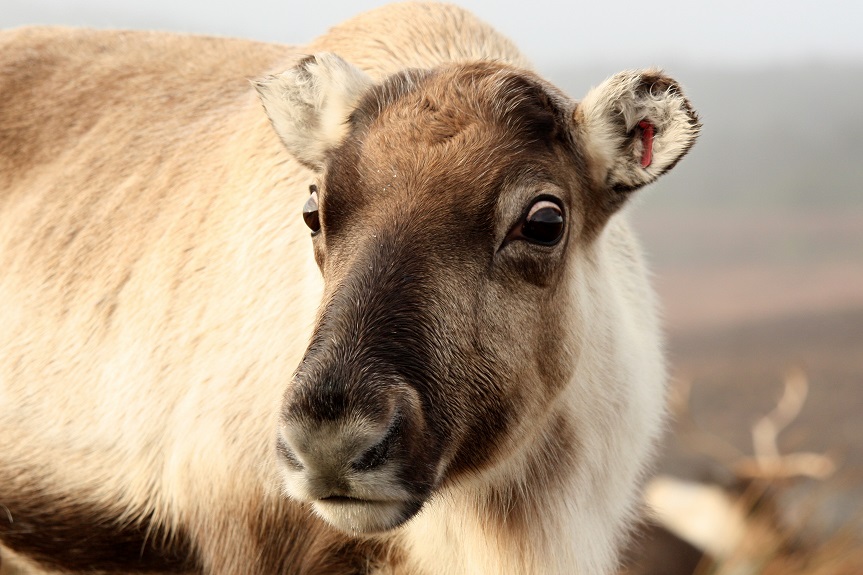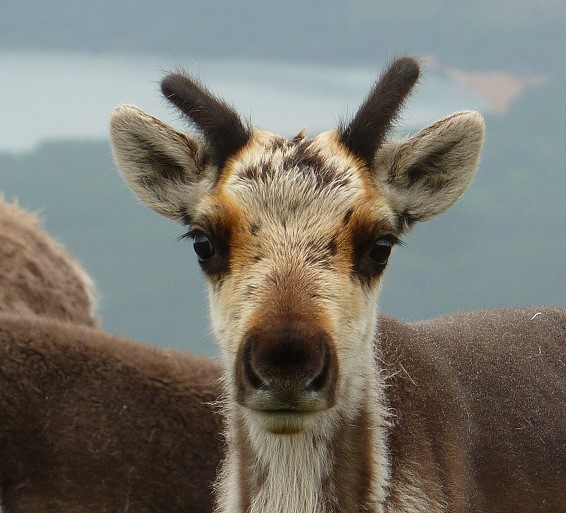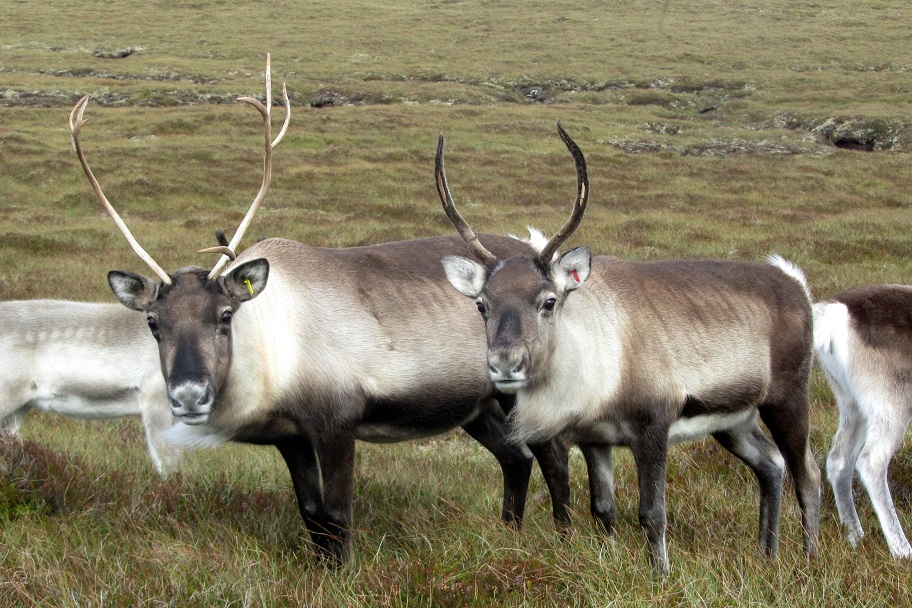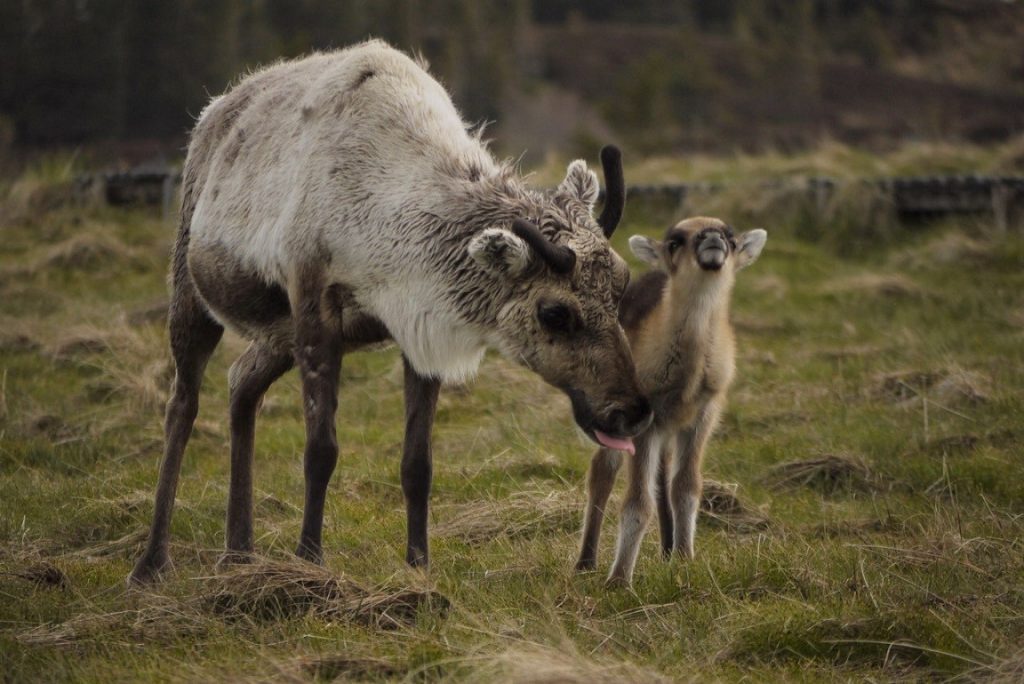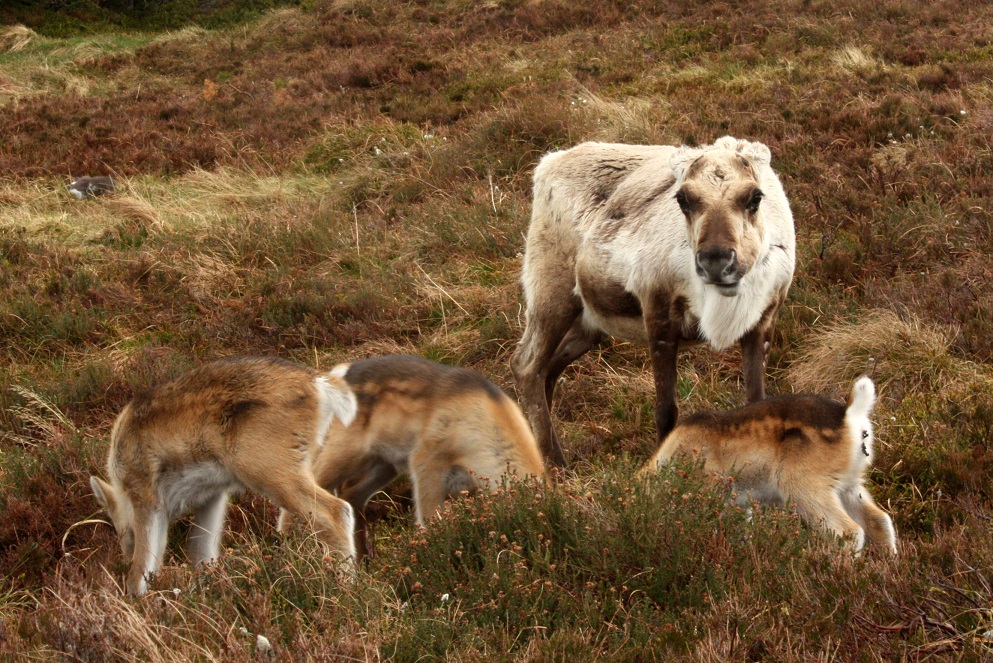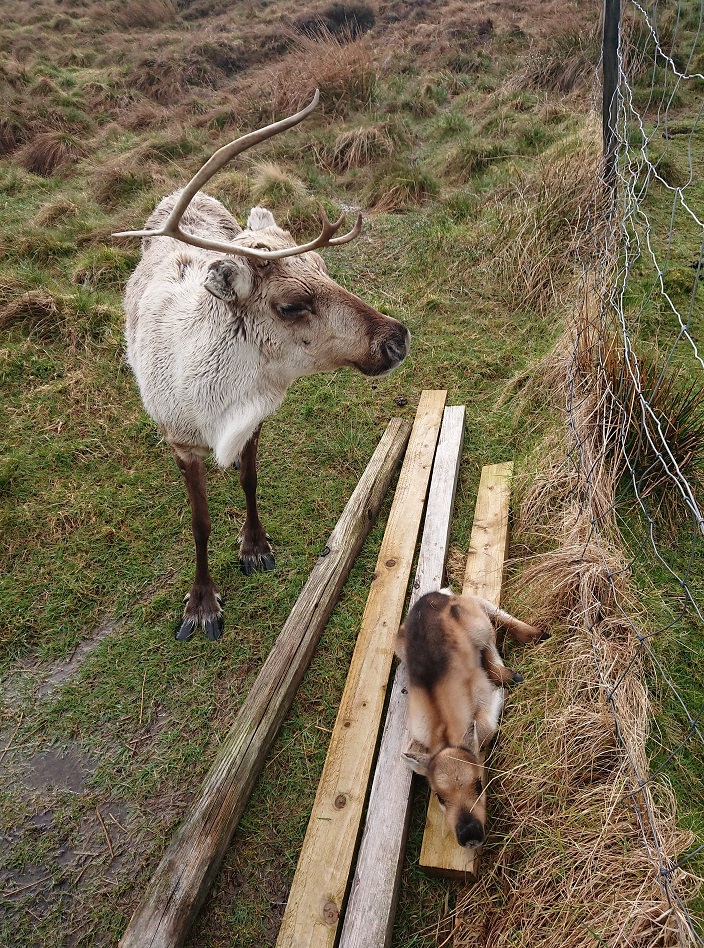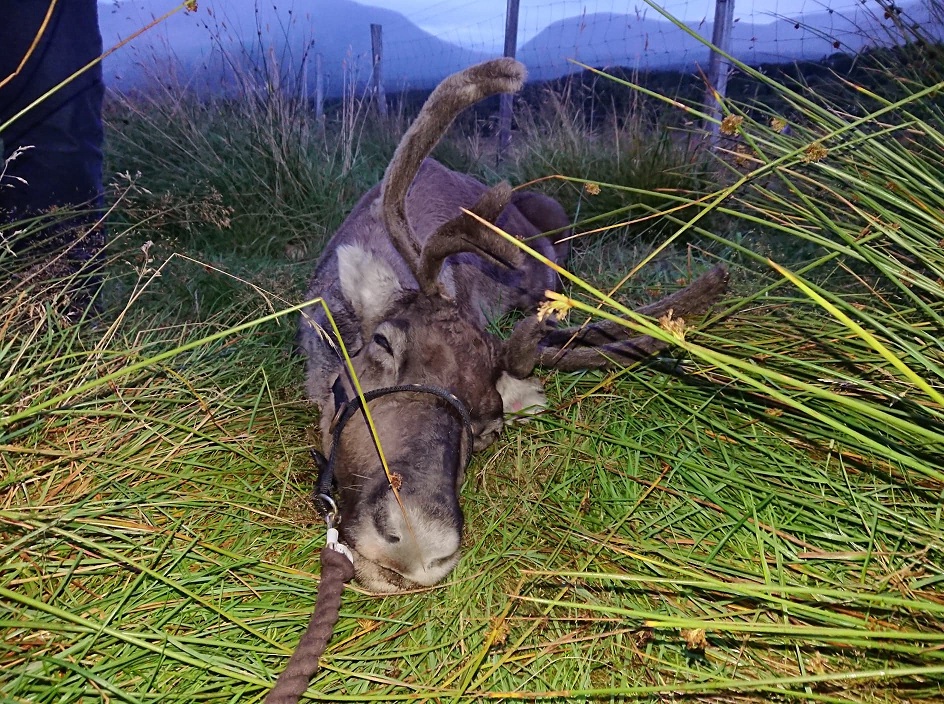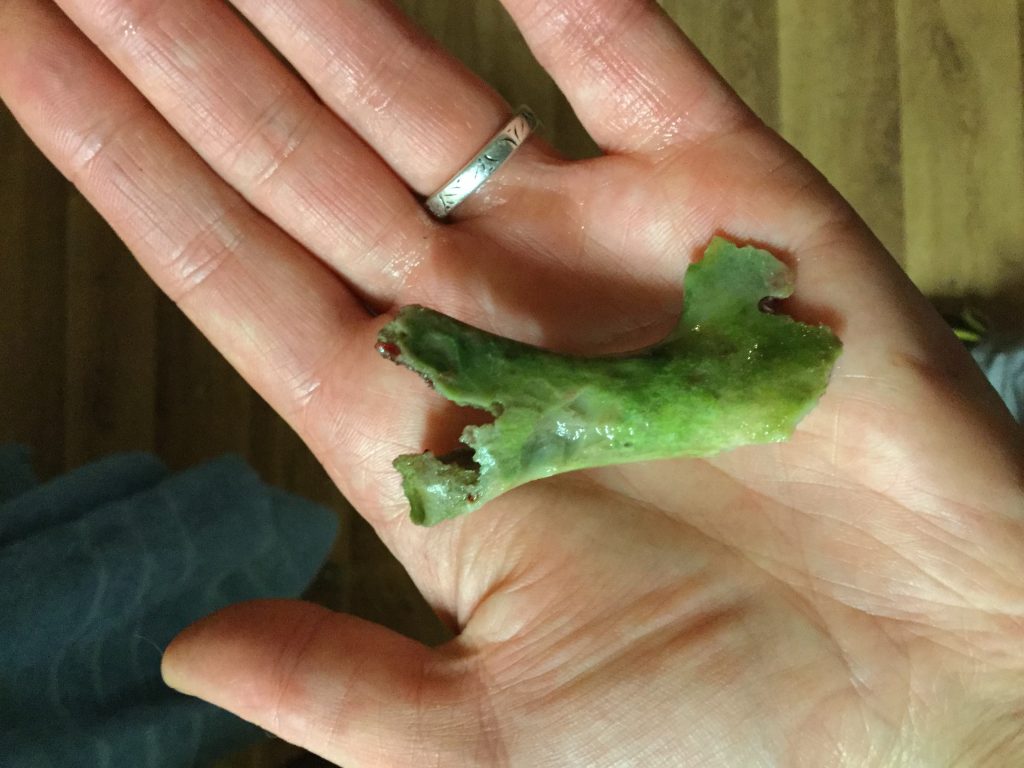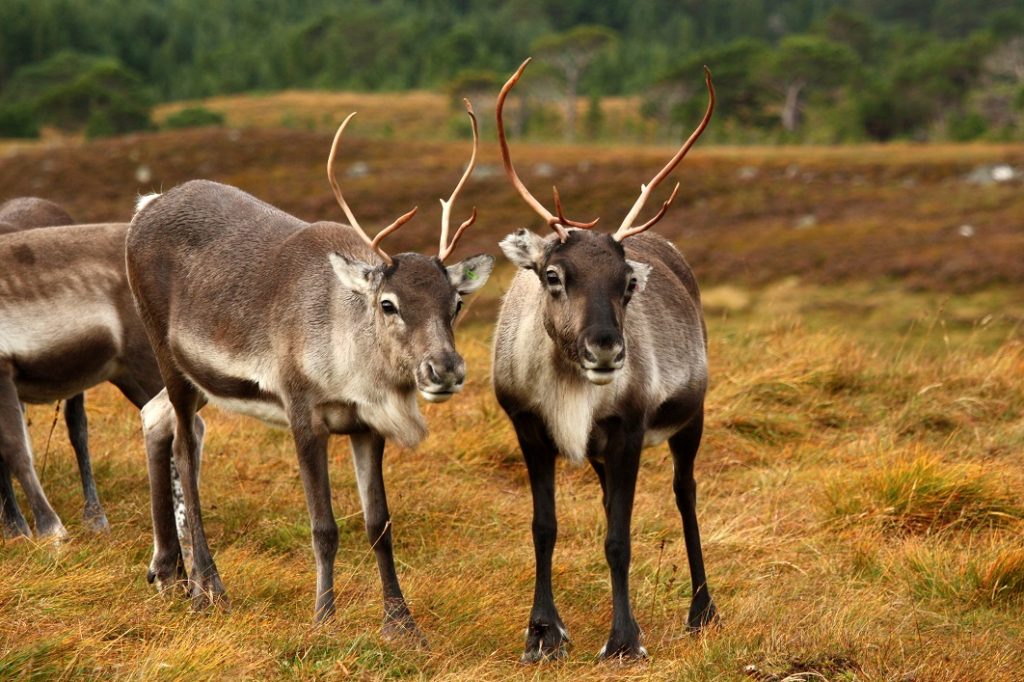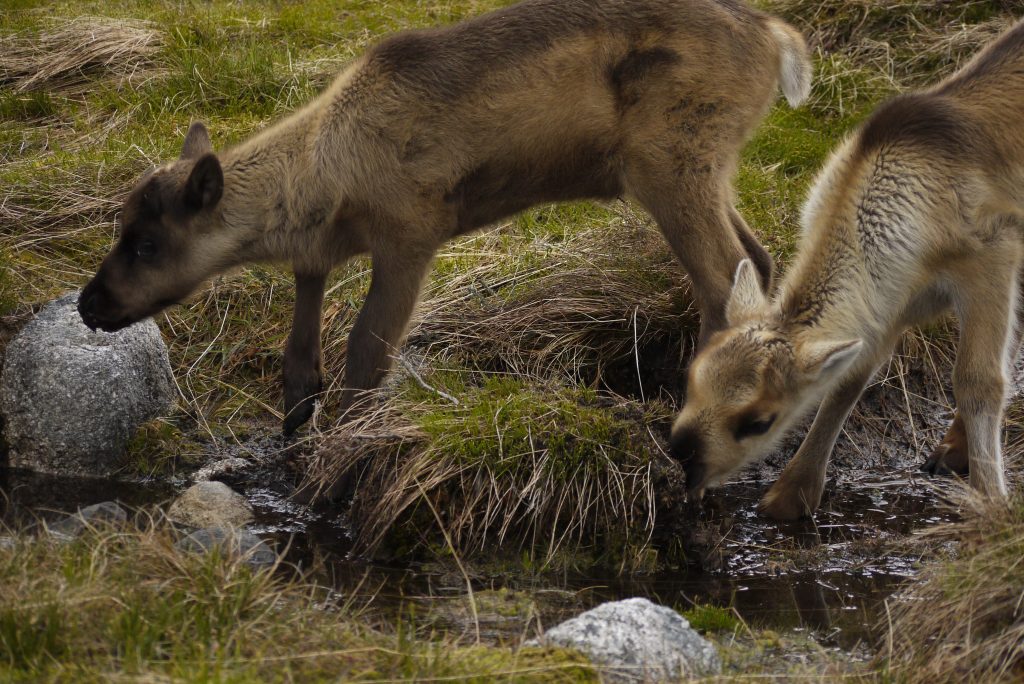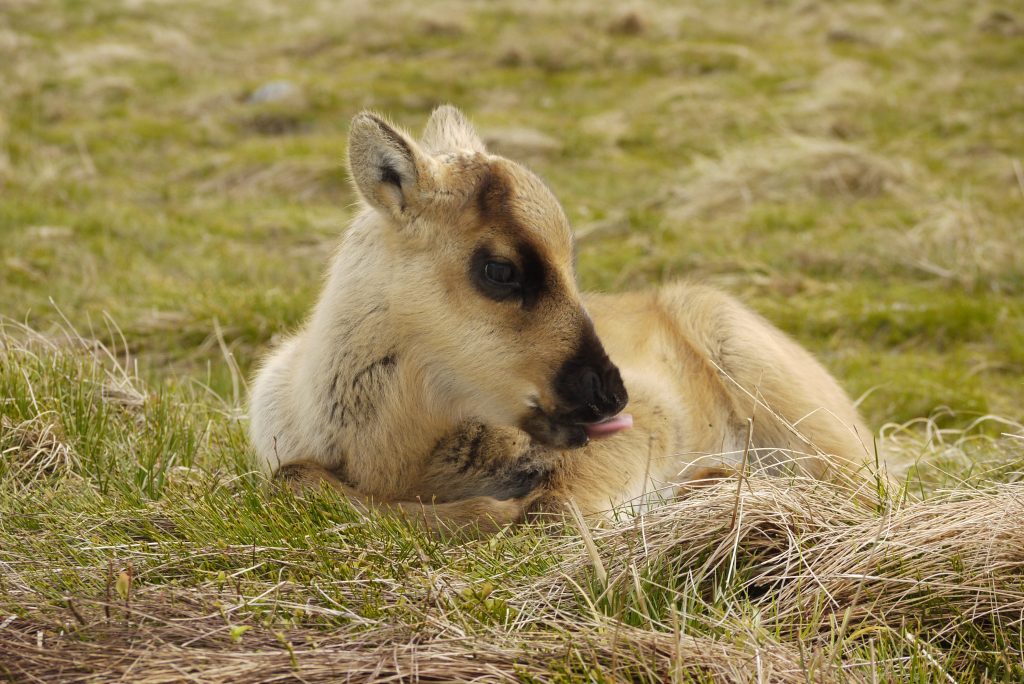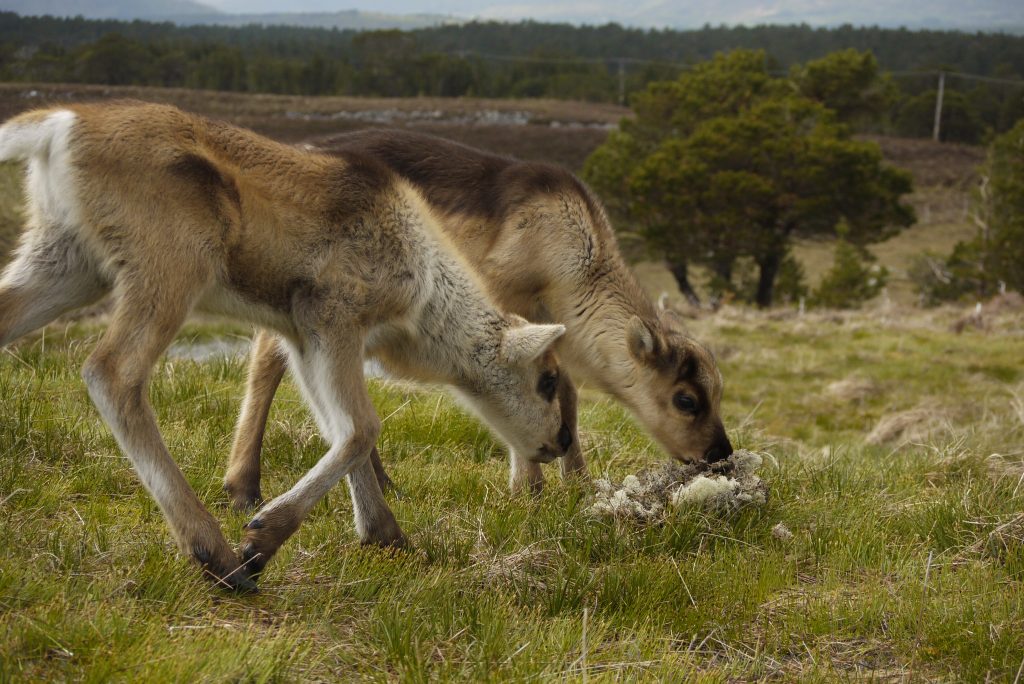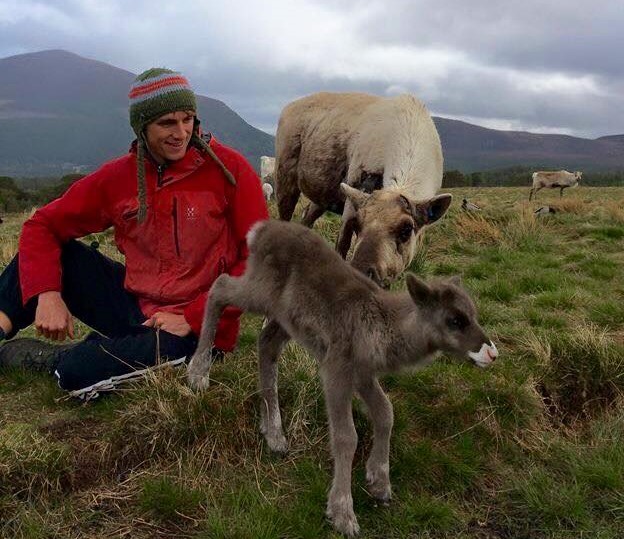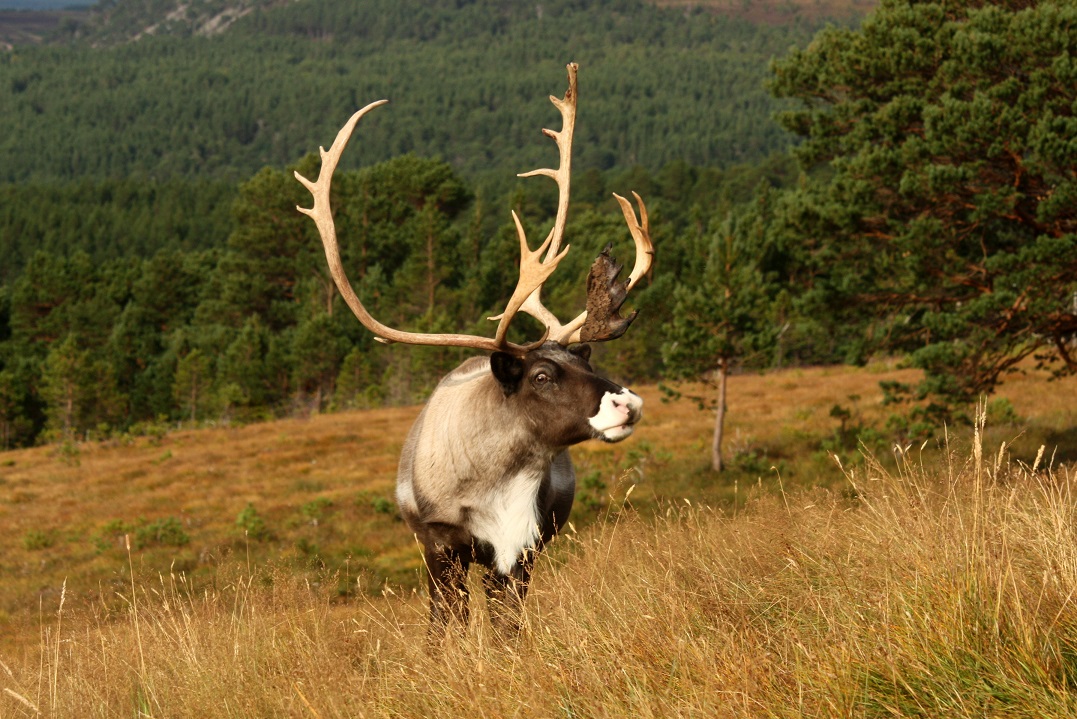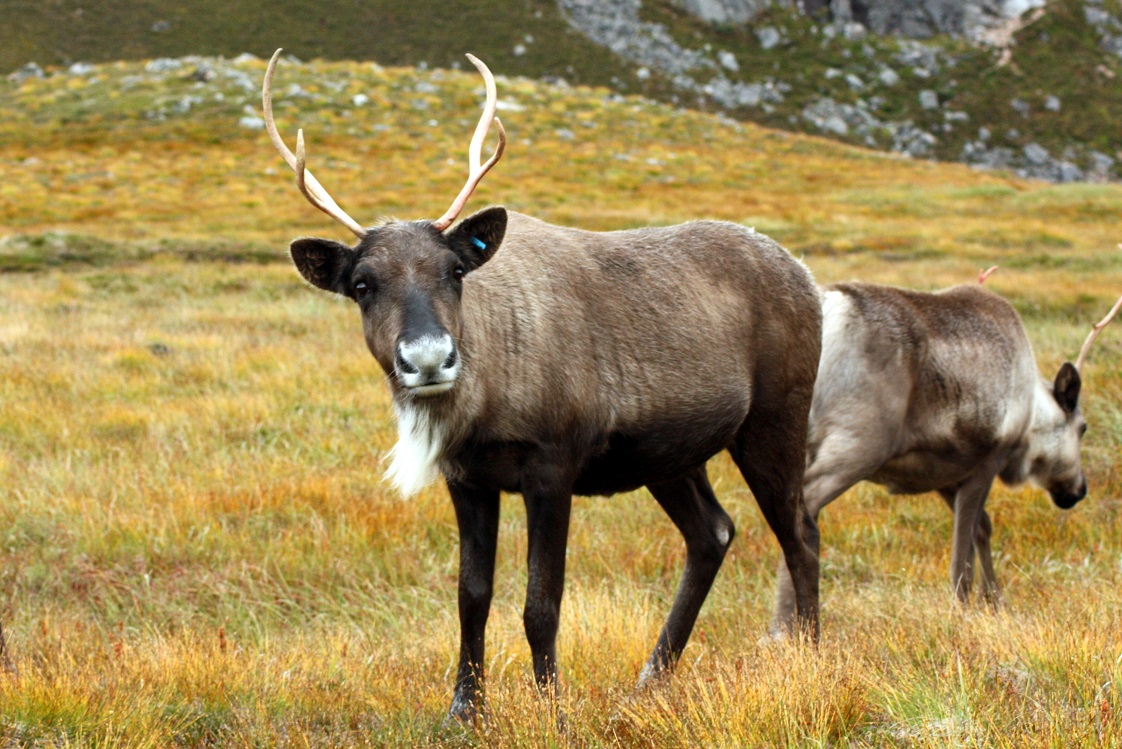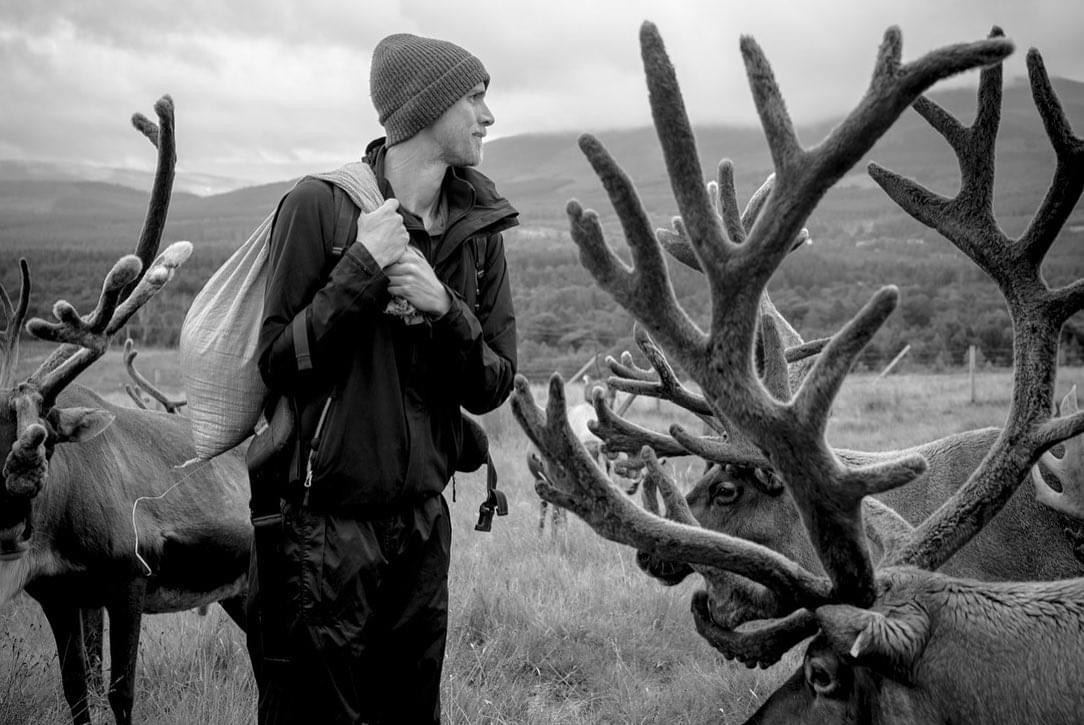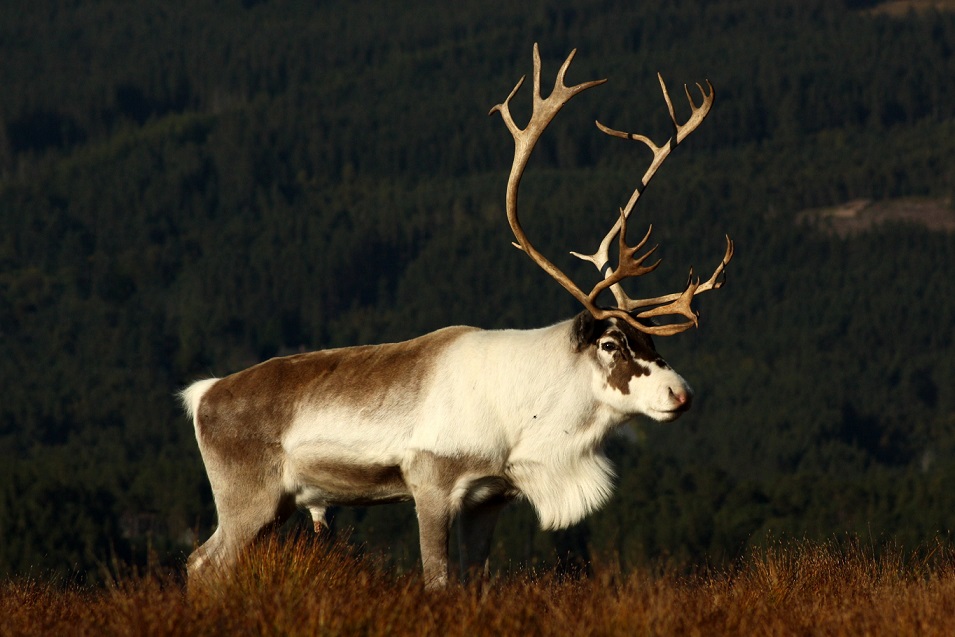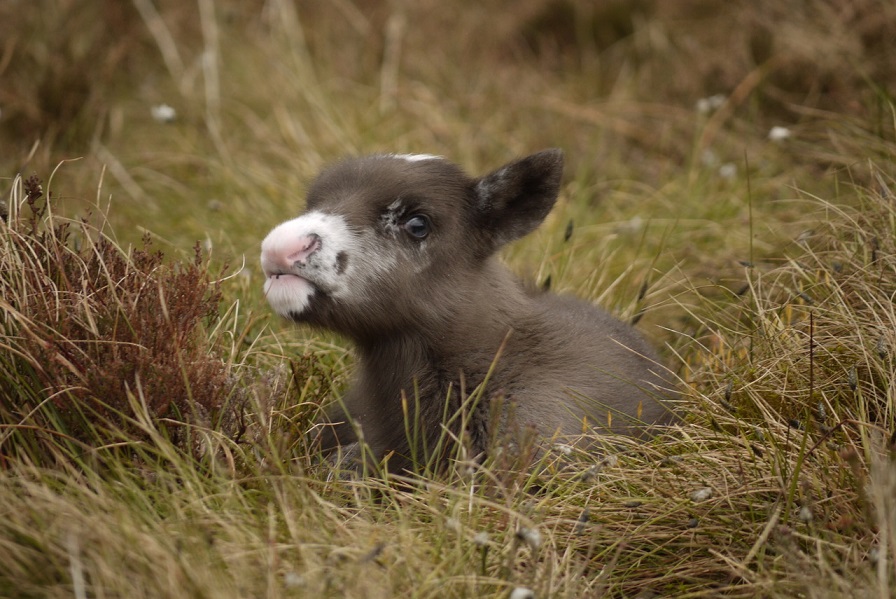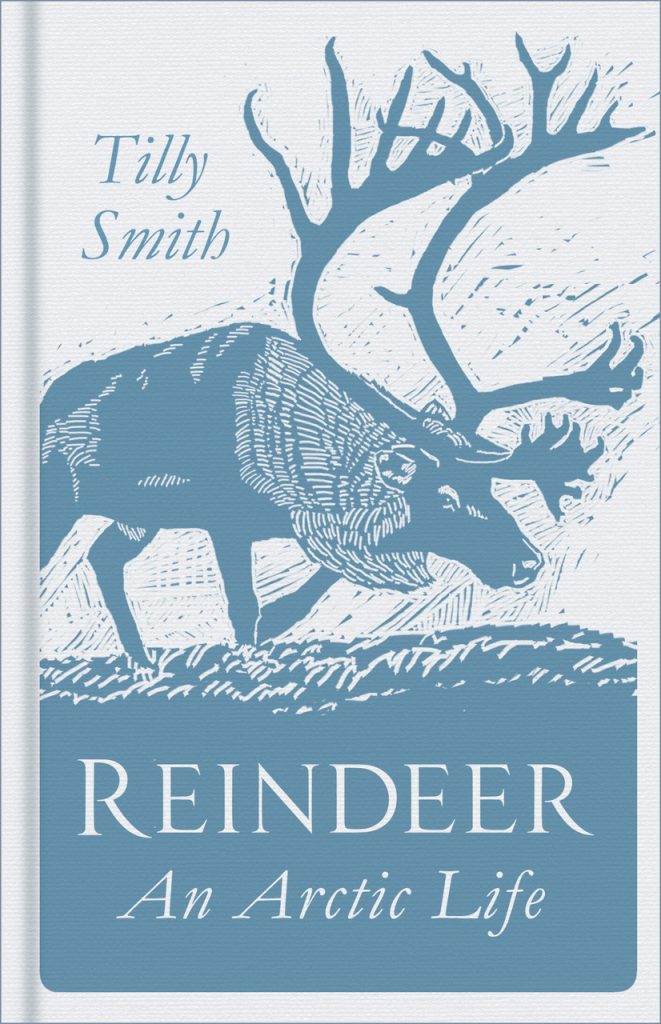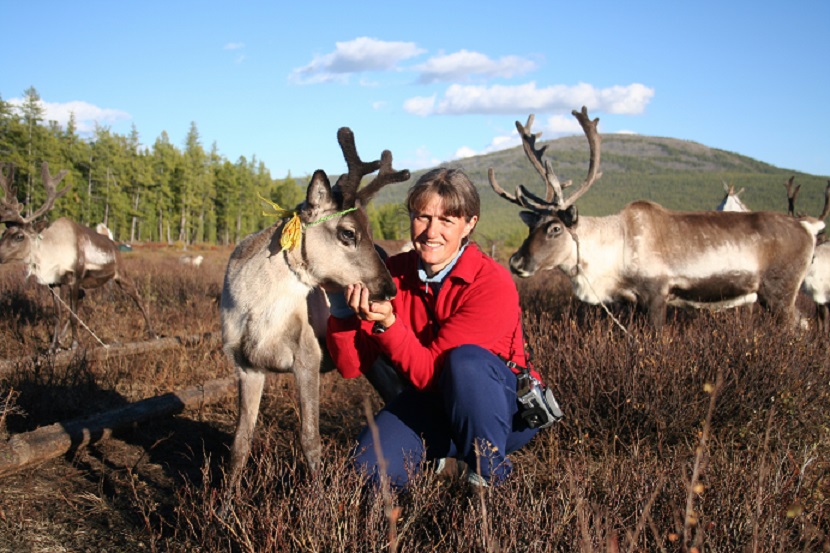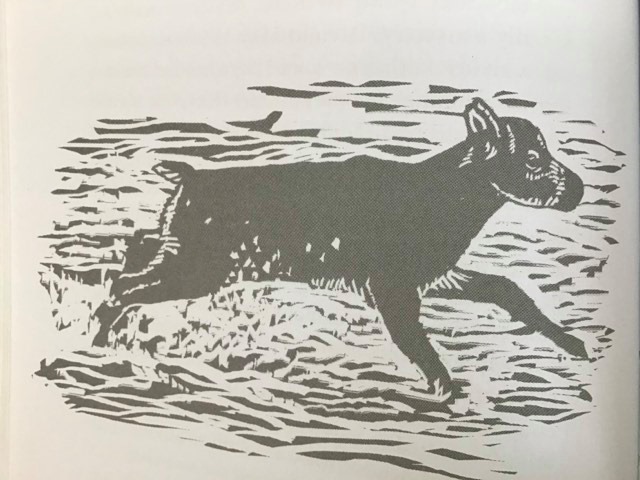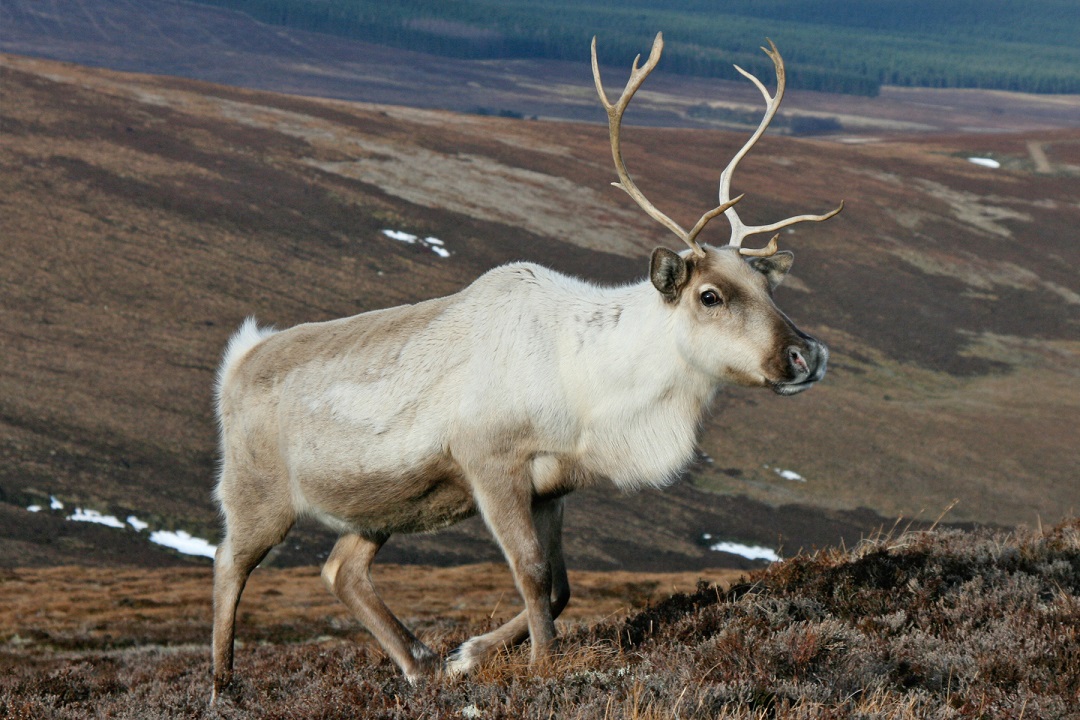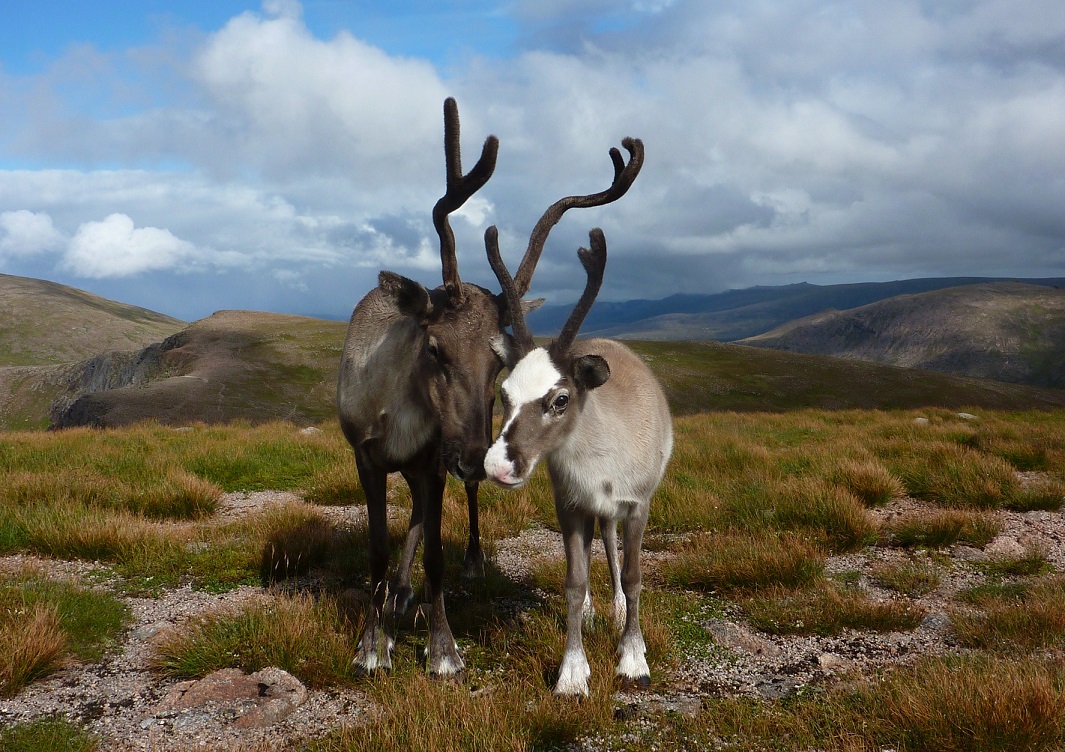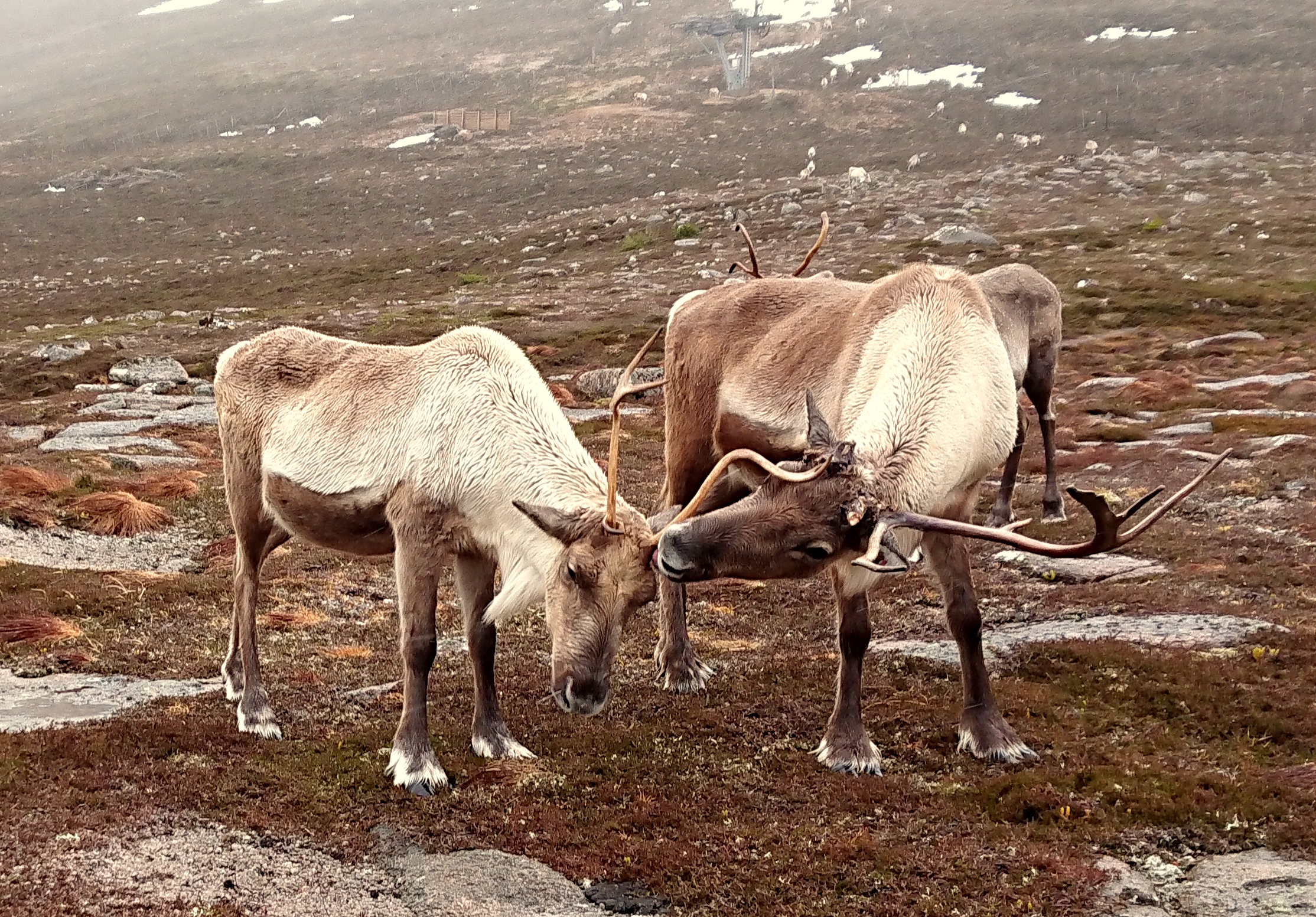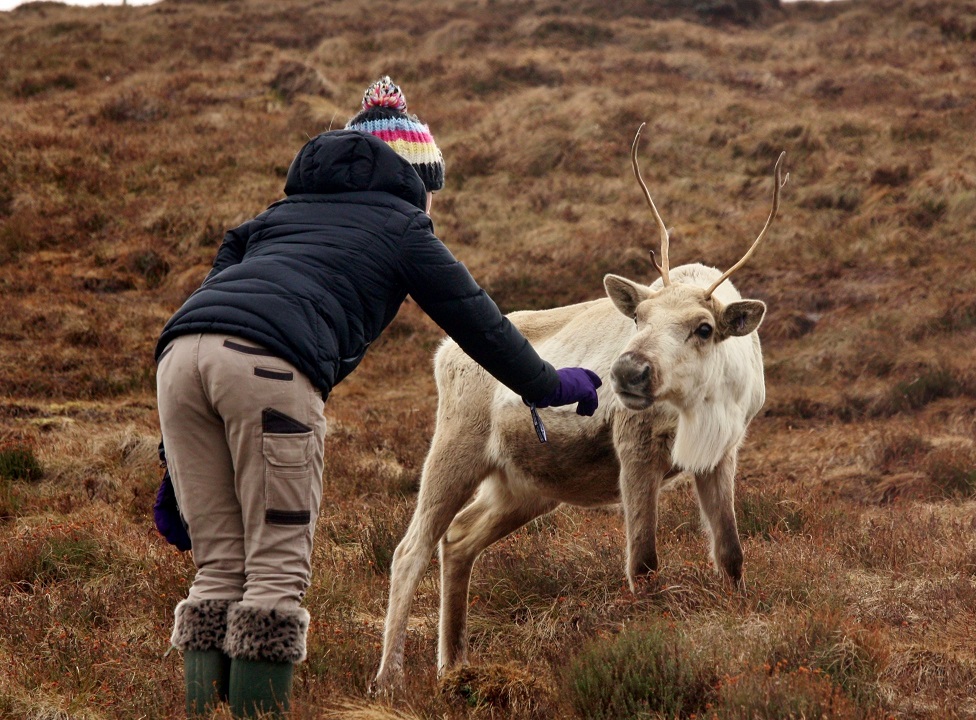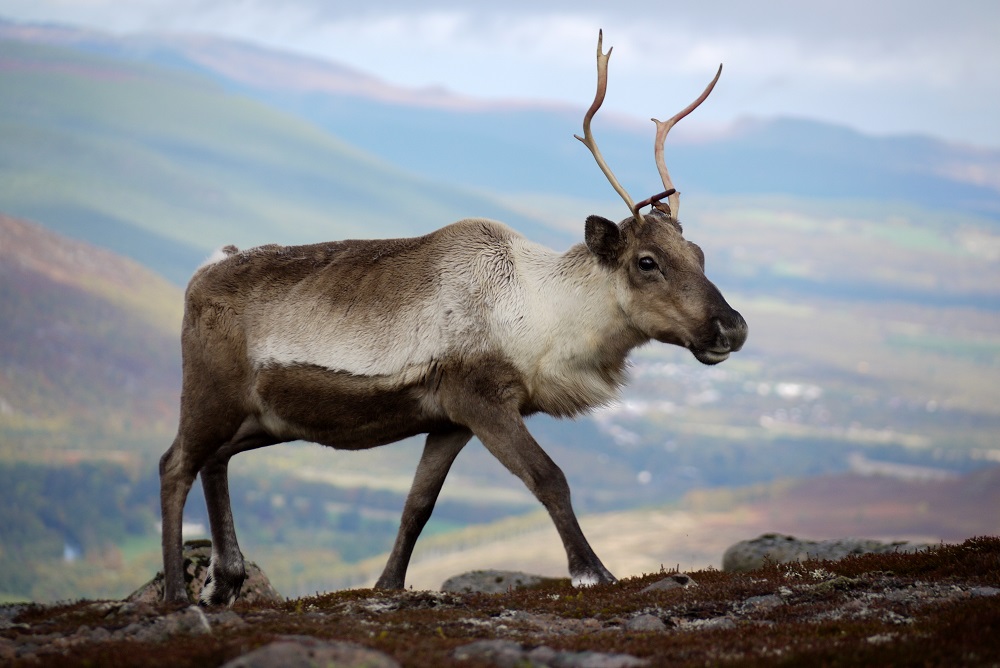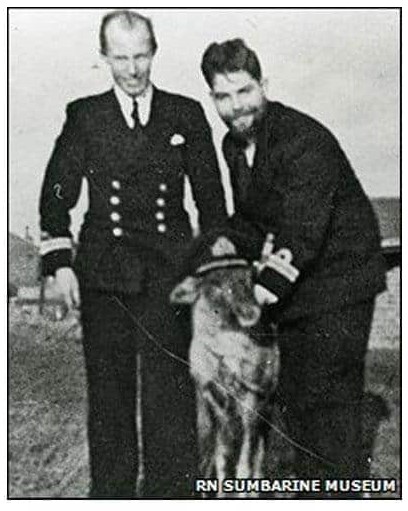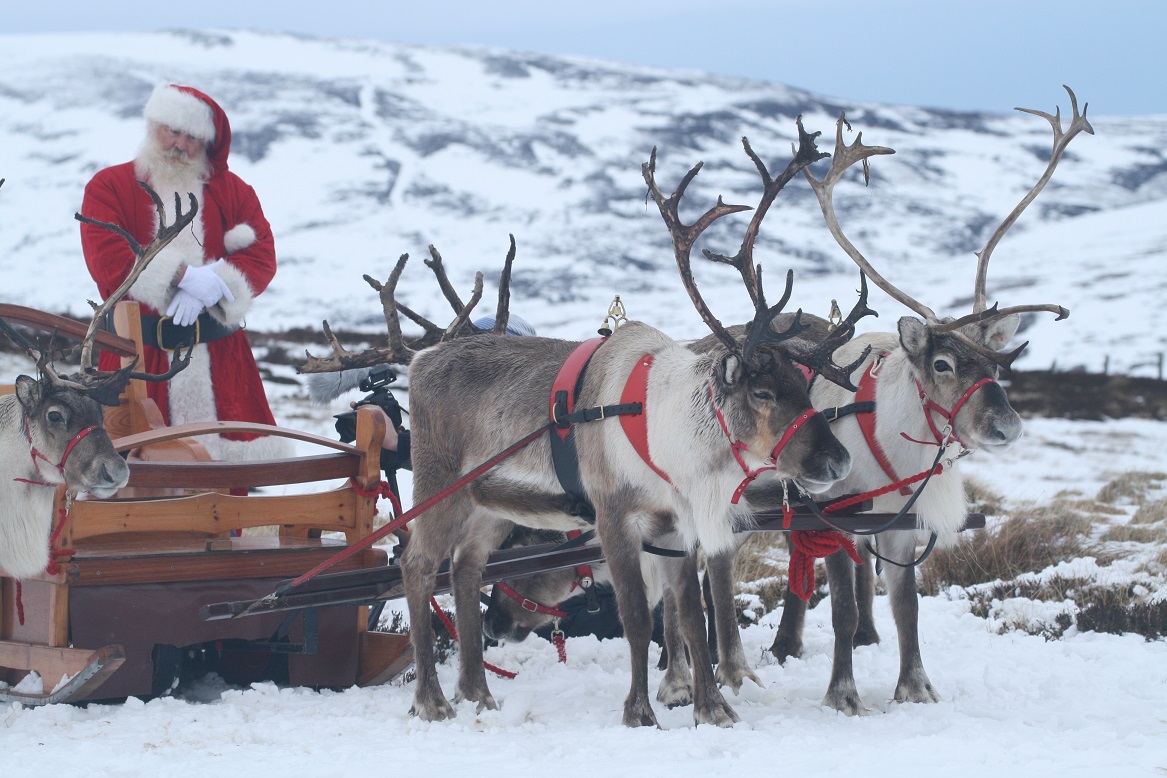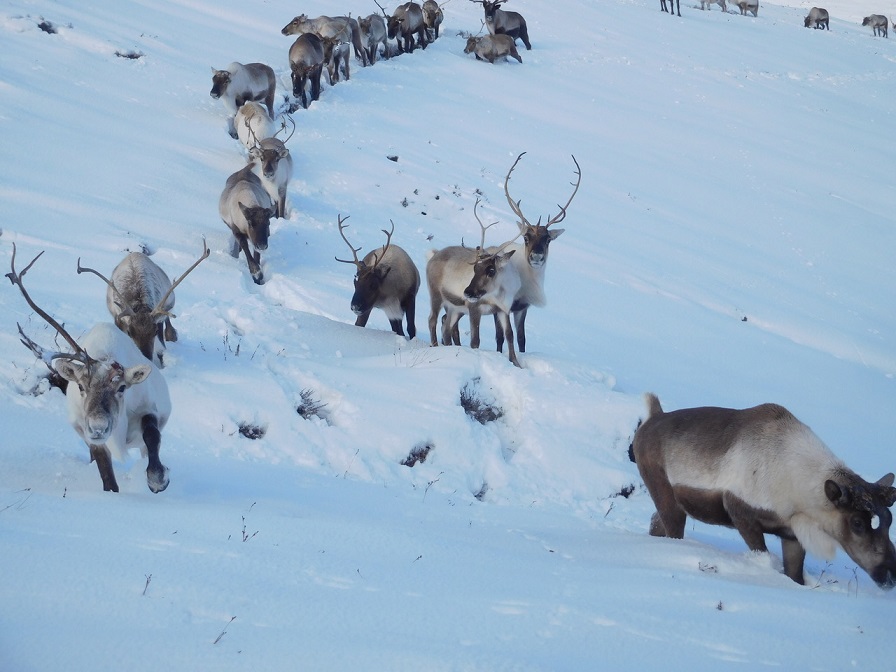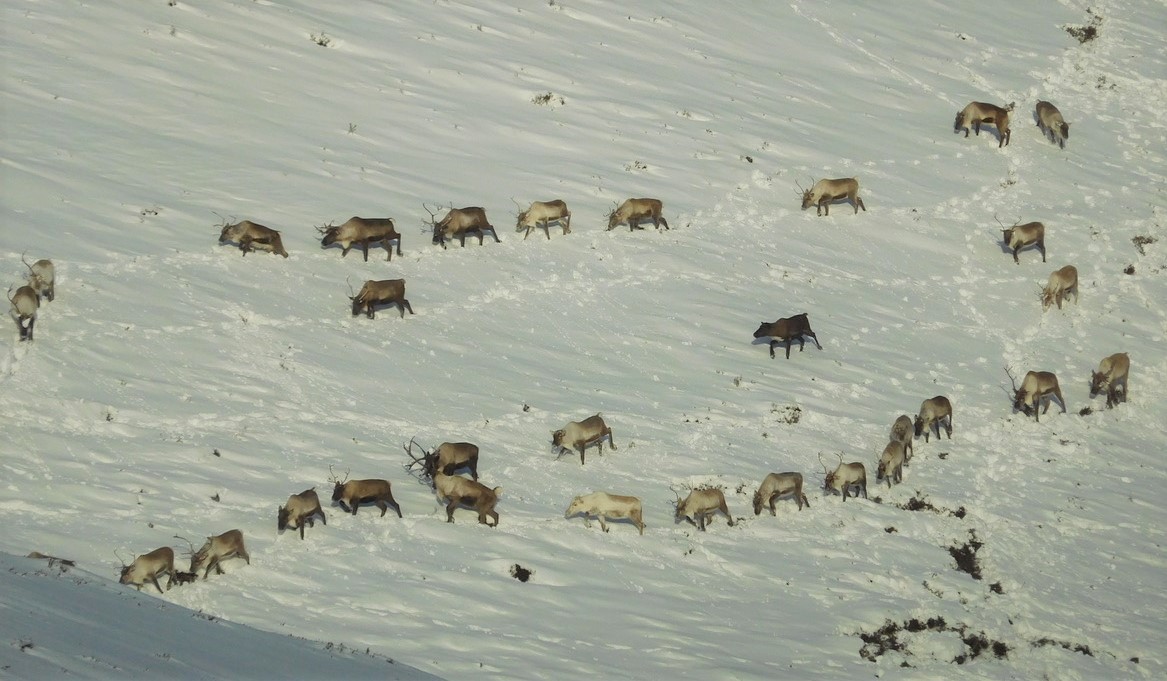This week’s blog is by Sarah Hobbs, a former reindeer herder here who now has a very different job! If you’re looking for a perfect activity to learn more about the local area while you’re here on holiday, then Strathspey Storywalks is for you! Enjoy a relaxed and leisurely potter while tasting some wild tea, and you’ll go away full of knowledge about the myths and legends of Aviemore and the surrounding area. Highly recommended!
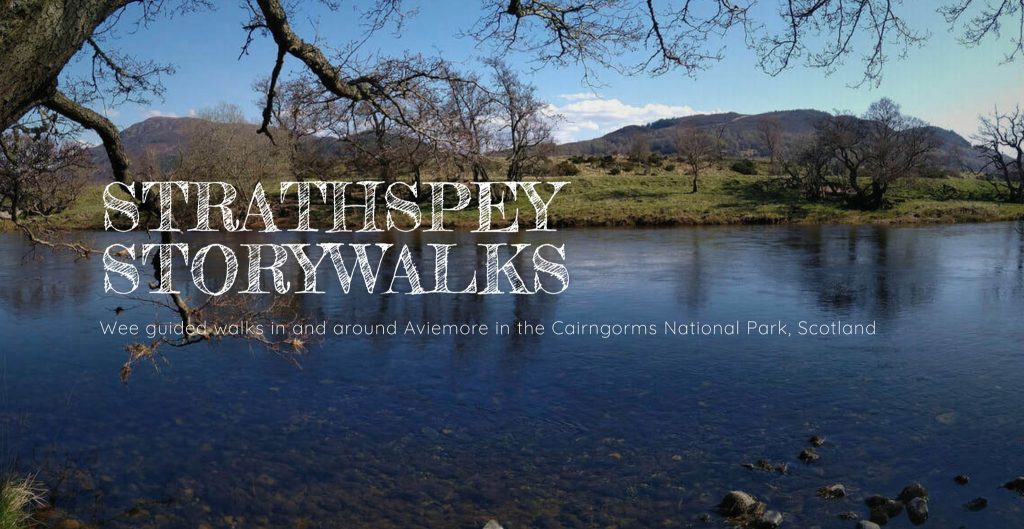
We are all so fond of the reindeer that we might forget that they (and we!) live alongside giants, fairies, ghosts of cattle raiders, cleared townships, and remains of illicit whisky distilling…
In 2013 I randomly googled ‘reindeer in the UK’ while idly wondering about returning to Norway where I’d lived for a while, to work with deer during my holidays. It came as a surprise to discover a herd free-ranging the Cairngorms, and I immediately wrote an email enquiring about volunteering. A long train journey with Nan Shepherd’s wonderful book about the mountains and a warm welcome later, it never takes long to fall for the place! The reindeer are totally captivating, calming and totally belong there – it’s a very special feeling.
After several years of spending all my annual leave volunteering with the herd, I quit my lovely job and life in London and moved to Glenmore in early 2016, completely taken with the reindeer, the mountains, and the quiet openness and warmth of Highlands folk. I worked with the herd for a year, a full turn of the calendar, and it was amazing to be with and observe them so closely as they constantly change and grow.
Glenmore and Aviemore is now my home (why would I leave?!), so fast forward to lockdown 2020, when I set up Strathspey Storywalks, taking folk on ‘slow adventures’ in and around Aviemore to share the history, culture, nature, Gaelic heritage and of course stories that this area is full of.
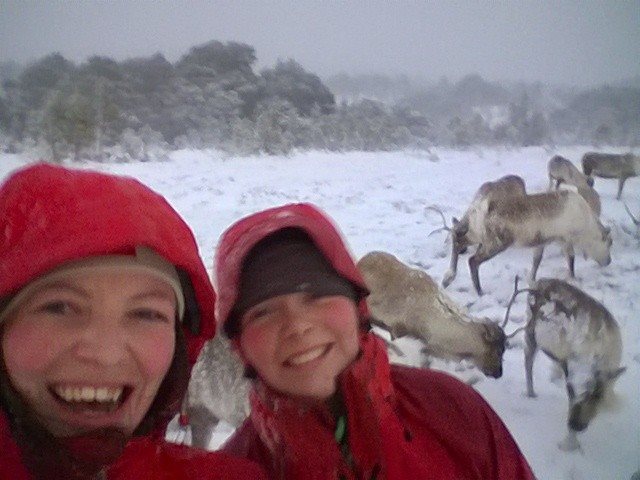
After several years of spending all my annual leave volunteering with the herd, I quit everything and moved to Glenmore in early 2016, completely taken with the reindeer, the mountains, and the quiet openness and warmth of Highlands folk. Fast forward to lockdown 2020, and I set up Strathspey Storywalks, taking folk on ‘slow adventures’ in and around Aviemore to share the history, culture, nature, Gaelic heritage and of course stories that this area is full of.
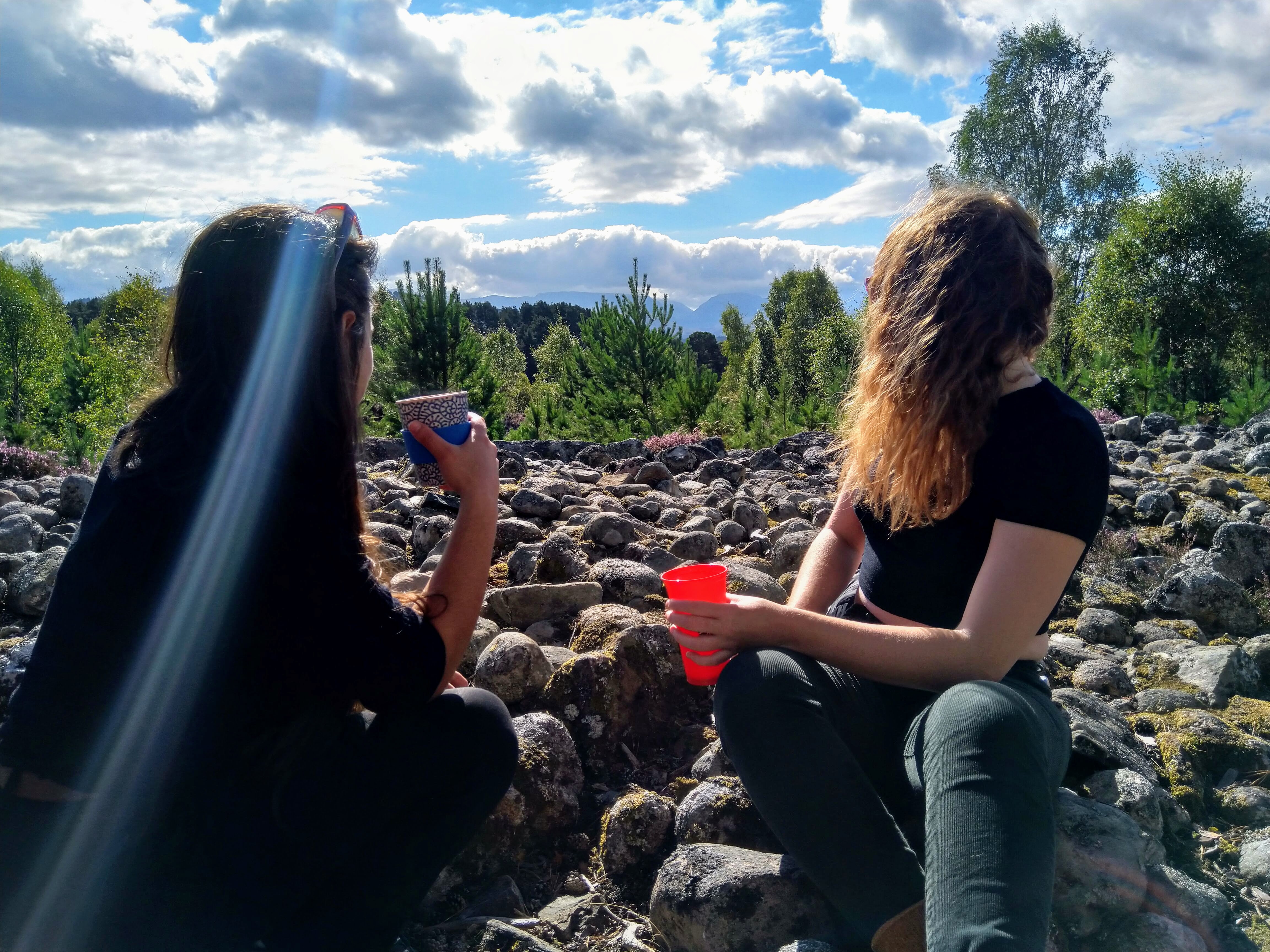
I’m now doing a short mentoring program with a professional storyteller, through TRACS, Scotland’s national network for traditional arts and culture.
So, the next time you come and visit the reindeer, maybe you’ll pay a visit to Loch Morlich to try and spot Red Hand, a giant Highland warrior who patrols the beach, making sure people respect the beautiful surroundings and don’t take more than they need. Listen out for strange pipe music too – this might be Donald, King of the Fairies, who lives closeby. There are several stories of encounters with ghostly happenings and eerie music here.

Or you might wander to Lochan Uaine, the Green Lochan, beneath Robbers’ Hill on Rathad nam Mèirleach or the Thieves’ Road, where of course it’s said the fairies wash their clothes. The strange conical hill above the lochan is a Sìthean, or Fairy Hill, and there are many across the Highlands (just look at a map and it won’t be long before you spot one!) This ‘fairy hill’ however is where local folk set up an illicit still to distill whisky, and the archaeological remains are still there.
Glenmore, the Cairngorms and Strathspey are so rich in incredible stories, it’s a genuine pleasure to share them, and for all of you to continue sharing them for many years to come! If I’ve whetted your appetite for more, please feel free to follow Strathspey Storywalks on Facebook or Instagram.
Sarah

